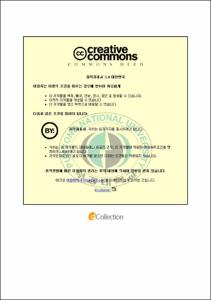船舶用 構造 鎔接材의 腐蝕 및 疲勞破壞 强度 硏究
- Alternative Title
- A Study on Corrosion and Fatigue Strength of Ship Structure Welding Steel
- Abstract
- There is a strong probability that welding structure, which is particularly used for ship-building, produces defect not in its base metal but in its welding part. This Study has executed digestion of welding agents upon 3 ways of welding such as SMAW, FCAW and SAW in the solution of 3.5% NaCl and 6% FeCl3 for 60 days, 90 days and 180 days, respectively to make quantitative analysis of the corrosion and fatigue characteristics of the weldment and, consequently, grasped for the tendency by the three welding methods through investigating its Corrosion Weight Loss and Corrosion Potential characteristics, and executed digesting the said three welding agents in two solutions for 90 days and carried out Corrosion Fatigue Test for them in the air and, thereby, made enabled to predict fatigue life and strength by drawing out S-N curve. As the result of this test, the mechanical property of the welding agents was getting lower than the base metal and, whereas, showed that SMAW is, in general, more excellent than FCAW and SAW in corrosion and fatigue strength. This study, of course, needs additional review through investigating its more concreted test plan and inquiry and, on the one hand, it is suggestive from the test result of this study that auto welding device to make best application of manual welding conditions be developed for the purpose of raising up the effect of auto welding for the areas, which need special attention to their corrosion & fatigue strength, like ship structure.
- Issued Date
- 2007
- Awarded Date
- 2007. 2
- Type
- Dissertation
- Keyword
- Fatigue Test Weight loss Corrosion Potential SMAW Shielded Metal Arc Welding FCAW Flux Cored Arc Welding SAW Submerged Arc Welding 피로시험 무게감량 부식전위 수동용접 반자동용접 자동용접
- Publisher
- 부경대학교 산업대학원
- Alternative Author(s)
- Jeong, Ju-Hwa
- Affiliation
- 부경대학교 산업대학원
- Department
- 산업대학원 기계설계학과
- Advisor
- 박경동
- Table Of Contents
- 제 1 장 서론 = 1
제 2 장 이론적 배경 = 2
2.1 피로시험의 개념 및 목적 = 2
2.2 피로시험법 및 피로시험기 = 3
2.2.1 피로시험법(S-N곡선) = 3
2.2.2 전피로영역 = 5
2.2.3 피로시험기 = 13
2.3 피로균열의 파괴역학적 개념 = 15
2.4 피로균열진전거동 = 19
2.5 금속부식의 이론 = 22
2.5.1 이종금속의 부식 = 22
2.5.2 부식속도에 미치는 요인 = 25
2.5.3 부동태 = 27
제 3 장 실험장치 및 방법 = 29
3.1 시험편 = 29
3.2 실험장치 = 31
3.3 실험방법 = 32
제 4 장 실험결과 및 고찰 = 33
4.1 경도관찰 = 33
4.2 침지 1440시간의 무게감량 = 34
4.2.1 3.5% NaCl 수용액에서 용접별 무게감량 = 34
4.2.2 6% FeCl₃ 수용액에서 용접별 무게감량 = 36
4.3 침지 2160시간의 무게감량 = 38
4.3.1 3.5% NaCl 수용액에서 용접별 무게감량 = 38
4.3.2 6% FeCl₃ 수용액에서 용접별 무게감량 = 41
4.4 침지 4320시간의 무게감량 = 43
4.4.1 3.5% NaCl 수용액에서 용접별 무게감량 = 43
4.4.2 6% FeCl₃ 수용액에서 용접별 무게감량 = 45
4.5 침지 1440시간 동안의 부식전위변화 = 47
4.5.1 3.5% NaCl 수용액에서 용접별 전위변화 = 47
4.5.2 6% FeCl₃ 수용액에서 용접별 전위변화 = 48
4.6 침지 2160시간 동안의 부식전위변화 = 49
4.6.1 3.5% NaCl 수용액에서 용접별 전위변화 = 49
4.6.2 6% FeCl₃ 수용액에서 용접별 전위변화 = 50
4.7 침지 4320시간 동안의 부식전위변화 = 51
4.7.1 3.5% NaCl 수용액에서 용접별 전위변화 = 51
4.7.2 6% FeCl₃ 수용액에서 용접별 전위변화 = 52
제 5 장 용접별 2160시간의 부식피로강도 결과 = 53
5.1 3.5% NaCl 수용액에서 2160시간의 부식피로강도 = 53
5.1.1 SMAW에 의한 용접재의 결과 = 53
5.1.2 ECAW에 의한 용접재의 결과 = 54
5.1.3 SAW에 의한 용접재의 결과 = 55
5.1.4 용접방법별 결과 = 56
5.1.5 3.5% NaCl 수용액에서 피로파괴강도비교 = 58
5.2 6% FeCl₃ 수용액에서 2160시간의 부식피로강도 = 60
5.2.1 SMAW에 의한 용접재의 결과 = 60
5.2.2 ECAW에 의한 용접재의 결과 = 61
5.2.3 SAW에 의한 용접재의 결과 = 62
5.2.4 용접방법별 결과 = 63
5.2.5 6% FeCl₃ 수용액 피로파괴강도비교 = 65
제 6 장 결론 = 67
참고문헌 = 70
Abstract = 72
- Degree
- Master
- Files in This Item:
-
-
Download
 船舶用 構造 鎔接材의 腐蝕 및 疲勞破壞 强度 硏究.pdf
기타 데이터 / 3.01 MB / Adobe PDF
船舶用 構造 鎔接材의 腐蝕 및 疲勞破壞 强度 硏究.pdf
기타 데이터 / 3.01 MB / Adobe PDF
-
Items in Repository are protected by copyright, with all rights reserved, unless otherwise indicated.